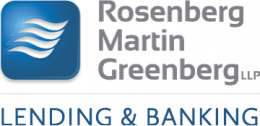End of HAMP Heralds New Era in Loan Modification and Loss Mitigation for Lenders
Launched in response to the financial crisis of 2008, the federal Home Affordable Modification Program (HAMP) officially ended on December 31, 2016, with approximately 2.8 million homeowners having been granted permanent modifications to their mortgage loans. Recent reporting from the Treasury Department heralded HAMP as having been a success in many ways, and its conclusion has prompted industry leaders to pursue an industry-wide standardization of loan modification protocols to prevent a large-scale recurrence of the previous housing meltdown.
HAMP fundamentals
The overarching purpose of HAMP was to design a framework under which large lenders across the country could provide distressed homeowners and those in imminent danger of foreclosure with a modification of loan terms that better reflected their present income levels and ability to pay. The federal program provided mortgage servicing entities with incentives to enter into these types of loan modifications as a means to prevent mass foreclosures and also promulgated guidelines and eligibility standards for borrowers.
By crafting modifications that incorporated interest rate reductions, forbearance agreements, reductions in principal and the like, lenders were able to play an important role in restoring a much-needed degree of stability to the home lending universe.
Realities of the post-HAMP mortgage lending landscape
With HAMP already at an end, the mortgage industry has committed itself to developing a cohesive, viable framework for loan modification, as is evidenced by the Mortgage Banking Association’s (MBA) “One Mod” program, touted by many as a possible successor to the federal program. Formulated with the advice and guidance of the MBA’s loss-mitigation task force, One Mod would strive to give predictability and clarity to consumers as well as loan servicers by adhering to principles of accessibility, affordability, sustainability and transparency, regardless of the guarantor or government insurer involved. Proponents of One Mod argue that it has the potential to bring the consistency and scalable attributes necessary to yield real relief to troubled borrowers as well as foster solid outcomes for investors.
Loan modification counsel for lenders across the Mid-Atlantic region
Lenders wishing to take an active role in the policy formulation process within their own institutions can turn to Rosenberg Martin Greenberg for innovative solutions aimed at mitigating risk and loss.
Whether in the context of residential home loans or commercial real estate enterprises, the loan modification team at Rosenberg Martin Greenberg understands that every lending relationship is unique and that a one-size-fits-all approach to modifications or forbearance arrangements is not the best practice. We undertake a thorough review of all existing loan documents, lender objectives and borrower financial conditions to craft truly customized solutions for every client we serve. With constant monitoring of all lending industry trends and emerging statutory requirements, our team can help craft loss-mitigation strategies aimed at benefiting all parties involved.
To learn more, contact the RMG Lending & Banking group at today.
